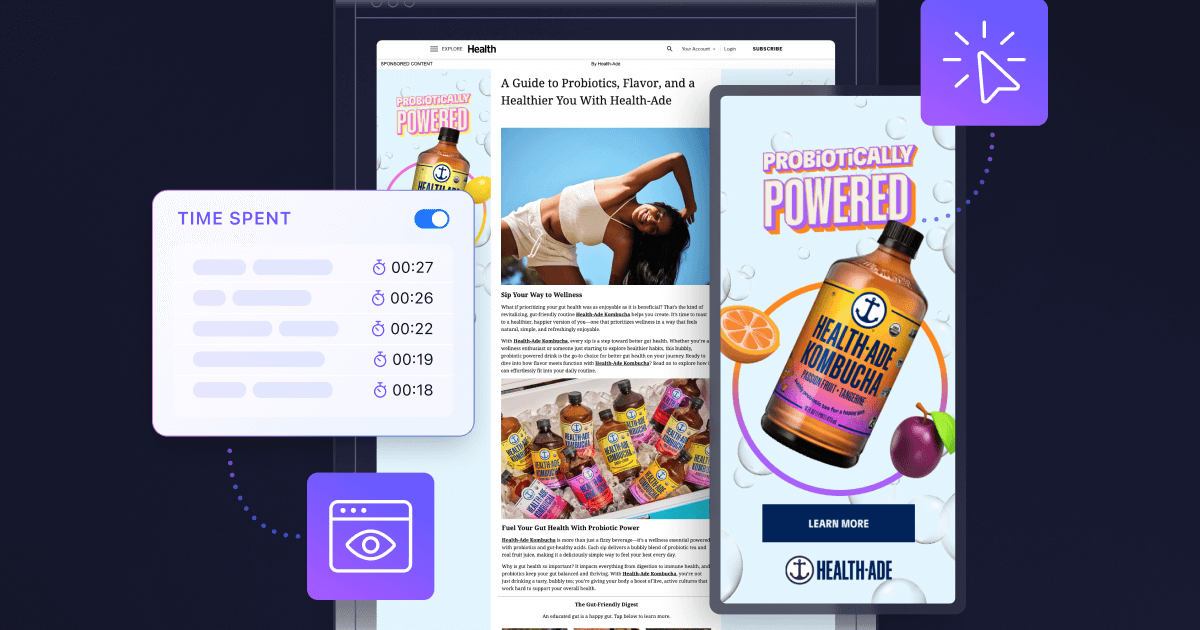Which Platform Is Best for Running Native Ads?
.png)
Native advertising represents a crucial approach in the contemporary marketing landscape, as it fosters engagement by seamlessly integrating promotional content into the user's natural online experience. Unlike traditional display ads that may disrupt the user journey, native ads blend with surrounding organic content, enhancing brand visibility without intruding.
As marketers explore the myriad options available for native advertising, selecting the right platform becomes a critical decision that can significantly impact campaign success. Which platform is best for running native ads? The answer depends on a brand’s goals, approach, and content assets.
Let’s delve into the key considerations that marketers should bear in mind when evaluating and selecting native advertising platforms.
Relevance and Alignment with Brand Values
Native advertising thrives by blending seamlessly with the platform's organic content, and in many cases, that means blending with the content of the platform’s publishing partners. In this regard, it’s imperative to understand the quality of the content that your native advertising platform supports. Advertisers need to know that their brand content can scale with their native advertising platform, but they also need to know it’s appearing in premium, trusted environments that align with their brand values and support a sustainable digital publishing ecosystem. In this regard, look for platforms that have publisher-direct relationships that can deliver real business outcomes.
Audience Targeting Capabilities
The success of a native advertising campaign hinges on reaching the right audience at the right time. Robust audience targeting capabilities are thus a pivotal factor when selecting a native advertising platform. Marketers should look for platforms that offer sophisticated targeting options and the ability to tailor content delivery based on user interests and behaviors—without the use of third-party cookies, which are all but irrelevant in 2024.
User Experience and Seamless Integration
A seamless integration of native ads into the user experience is paramount for their effectiveness. Marketers should assess how well the platform's native ad formats align with the overall look and feel of the content environments. Native advertising should feel like a natural extension of the user's journey, maintaining a non-disruptive flow. Additionally, consider how well the platform supports various media formats, ensuring flexibility in delivering compelling content, whether it's articles, videos, or interactive elements.
Performance Analytics and Measurement
Accurate measurement and actionable analytics are crucial for assessing the success of native advertising campaigns. Marketers should prioritize platforms that provide comprehensive performance metrics, allowing for in-depth analysis of key indicators such as engagement, click-through rates, and conversion attribution. Real-time reporting capabilities enable marketers to make data-driven adjustments during the campaign, optimizing for better results and ensuring a higher return on investment (ROI).
Ad Transparency and Disclosure Practices
Maintaining trust with the audience is paramount in native advertising. Marketers should choose platforms that uphold transparency and adhere to ethical disclosure practices. Clear labeling of native content as advertising helps establish transparency, ensuring that users are aware they are engaging with promotional material. Platforms with strong editorial guidelines and clear labeling contribute to a positive user experience, fostering trust and credibility for both the brand and the platform.
Ad Customization and Flexibility
Different campaigns require distinct creative approaches. Marketers should assess the level of customization and flexibility a native advertising platform offers in terms of ad formats, design, and messaging. Platforms that allow for A/B testing and easy iteration of creative elements enable marketers to refine their approach based on real-time feedback, ensuring campaigns remain effective.
Scalability and Reach
Marketers should evaluate the scalability of native advertising platforms to accommodate future campaign growth. A platform with a broad reach and the ability to target diverse audiences across different niches ensures that campaigns can be scaled effectively. Marketers should also consider whether the platform provides opportunities for cross-channel integration to maximize exposure and engagement.
Support and Collaboration Opportunities
Lastly, the level of customer support and collaboration opportunities offered by a native advertising platform should not be overlooked. Marketers should seek platforms that provide responsive customer support, as well as opportunities for collaboration and strategic guidance. A strong partnership with the platform can lead to more effective campaigns and a deeper understanding of the evolving native advertising landscape.
Choosing the right native advertising platform sets the foundation for successful campaigns that resonate with audiences and deliver measurable results. The “best” platform for native advertising might vary according to an advertiser’s goals, but the ones that can check the above boxes will be sure to deliver on the promise of a strong customer experience and significant advertiser ROI.

.jpg)


